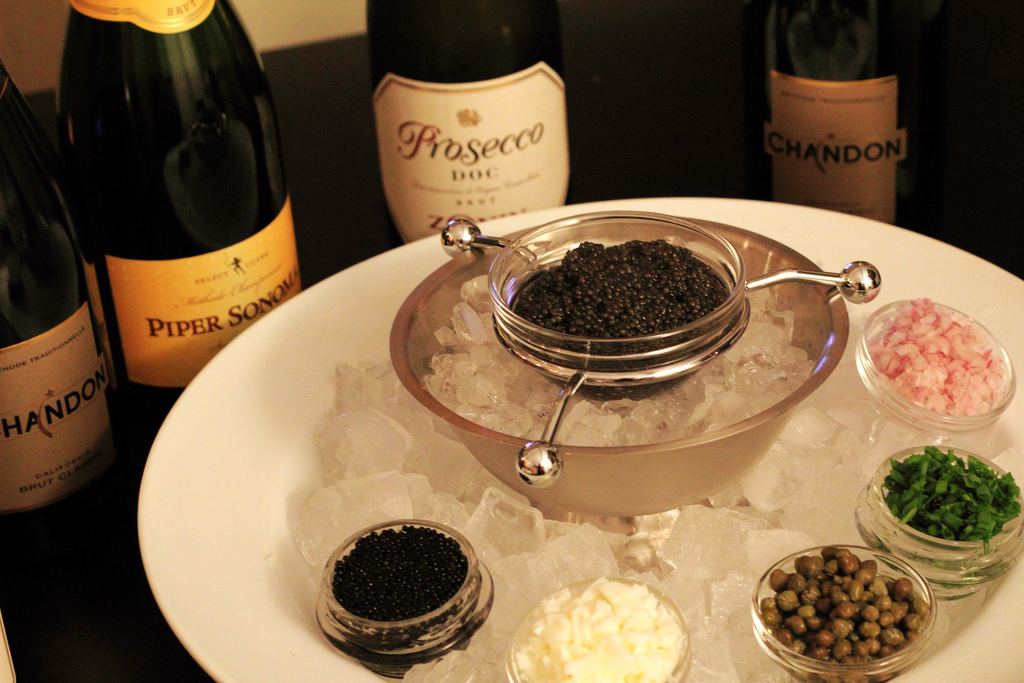True caviar is a distinction reserved only for sturgeon eggs, while all other fish eggs are technically to be referred to simply as roe. This difference is purely semantic, as the flavors of roe are as varied as the different varieties of caviar. As the worldwide sturgeon population is becoming more and more endangered, connoisseurs of this fine delicacy have been branching out to other, equally delicious options. Eggs from different fish are united by their similarly briny flavor and smooth, oozing texture, yet each possess a unique and varied flavor profile. Any true Wildcatter knows luxury is all about presentation and perception, and it’s high time we gave other types of roe their due.

Fun Facts:
- There are 26 known species of sturgeon, all of which have been used to produce caviar
- Unlike the evolved delicacy of raw oysters or the marketed delicacy of Champagne, caviar has been a food of the royals and elites since antiquity
- The most expensive caviar ever sold weighed in $1,000/ounce, taken from a species of Iranian sturgeon between the ages of 60-100 years old
- Light colored golden roe has been called “Imperial Caviar,” and was once reserved solely for royalty
- Caviars are priced by rarity as opposed to taste, so what is considered “the best” is really a matter of preference
Types of caviar: Beluga, Osetra, Sevruga
Beluga Caviar
- One of the most expensive types of caviar, Beluga eggs, are large in shape and usually black in color with a subtle buttery flavor.
Osetra Caviar
- These medium sized eggs have more of a brownish hue and a sweeter, almost fruity flavor.
Sevruga Caviar
- The smallest of the sturgeon eggs, Sevruga caviar, can range in color from light gray to deep black. Their flavor is a bit more intense than other varieties, with a rich, salty flavor profile.

Other Types of Roe: Salmon, Paddlefish, Trout, Lumpfish
Paddlefish Roe
- Otherwise known as “American caviar,” these eggs have a buttery flavor similar to Beluga caviar as the paddlefish species is the most closely related to sturgeon. The small sized, clear beads range in color from light grey to golden.
Salmon Roe
- Easily recognizable by its characteristic reddish-orange color, salmon roe range in size from medium to extra large, providing a concentrated burst of salmon flavor and that familiar oozing quality. Salmon roe have been a longtime staple of Japanese cuisine and have been consistently gaining worldwide popularity.
Trout Roe
- Offering a more subtle alternative to salmon roe, these eggs are similarly golden-orange colored and large in size.
Lumpfish Roe
- As one of the more inexpensive varieties, it is often used to garnish or compliment other dishes, although it’s great on its own. These tiny eggs could be black or red, and have that intensely rich salty flavor we’ve come to associate with the delicacy and offer an almost crunchy texture.



